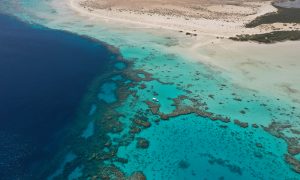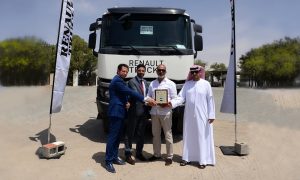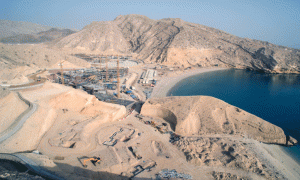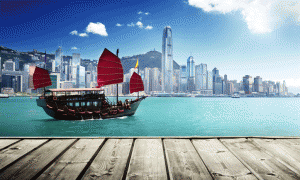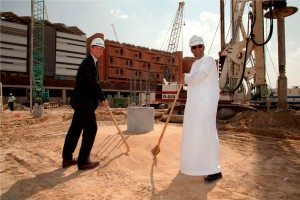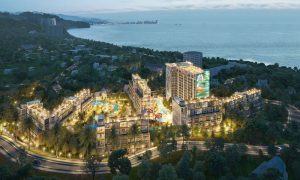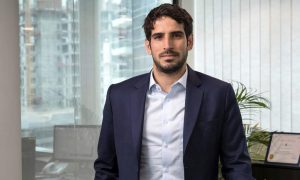Quality and quantity
water technology

Soil compaction, dust control, and batch concrete production all require huge amounts of water, as do the road, rail and other projects currently underway across the region.
The construction industry requires high-quality water in order to produce usable materials; it should be free from alkalis, acid, oils, salt, sugar, organic materials, vegetable growth and other substances that may be deleterious to bricks, stone, concrete or steel. It should also have a pH value of no less than six.
The use of low-quality water in building processes can reduce the strength of the bond between cement paste and aggregate, causing a knock-on effect on the quality of the entire finished project.
Add to this the fact that our most precious resource is scarce in the desert climate, and an unsustainable pattern of use soon emerges.
Three water industry experts tell The Big Project how our water is produced and what can be done to reduce consumption.
Peter Neuschaefer, Waagner Biro Gulf LLC
How can treatment facilities be improved to increase our efficiency of use?
Used water is transferred to treatment plants via gravity pipes with a depth of up to 16 metres below ground — depending on the slope of the drainage pipe. From time to time pump stations with high energy requirements lift the wastewater back to a height of three metres and then run back down to 16 metres and so on until it eventually reaches the treatment plant.
There it is treated using a lot of power, chemical additives, spare parts and maintenance, to a quality that can be used for irrigation and other purposes.
However, not all the water can be reused because of a lack of an established irrigation network, consisting of pressure pumps, power, and chemical additives and maintenance, to return the cleaner water to the area the wastewater was
originally produced.
This concept of treating water is an old technique that originated in Europe and has been established and utilised for over 100 years. Is this not strange? We like to use the latest technologies for our cars, computers, mobiles and other electronics, however we do not know how our sewage will be transported from one place to another.
It is vital that we educate ourselves of the process so we may pass on this knowledge, and learn about this complicated component of the infrastructure of the city.
This region consumes more water than any other region in the world, a great 500 litres per person per day. If a population of one million inhabitants, excluding agriculture, is multiplied by these 500 litres we discover that we use 500,000,000 litres per day. Now we multiply this number by 365 days to get 182,500,000,000 litres per year. What about the desalination process in which we separate salt from seawater to produce the demanded supply of water?
Mainly all the salt that outputs from this process is returned to the sea. Can we ask a question now? Are we reusing water properly if we don’t have natural resources?
Sabyasachi Dasgupta, sales manager, AG Aqua
As a result of increased demand, how has water management technology developed in past few years and what does the future for water technology?
The water management technology has evolved accordingly to the demand, to be precise. In early years, water was never looked after as a scarce resource and both the use and misuse were never under surveillance.
Our water sources started showing signs of stress after a few years, and that changed our usage pattern. Earlier, water management was limited to establishing a flawless pipeline, a good storage and a nominal water treatment.
As years passed, fresh water supply has reduced, particularly for getting non-contaminated, pure water — the industry was more focused towards water treatment.
In current years, the water supply itself is becoming scarce; whatever water is available, is not fresh and even water procurement processes have become more complicated. This scenario forces the industry to completely turn around water management strategies, which comprise of: water procurement from deep underground sources, distant rivers, lakes and other reserves; water storage and treatment and supply; effective and efficient use of water
and reuse of water to minimise the use of this precious resource.
Bassem Halabi Group Business Development Director – Metito Overseas Ltd
What are Metito’s primary water technology products and the benefits of these?
Primary water technologies are based on membrane separation. Be it for desalination purposes or wastewater reuse, membrane systems offer an environmentally friendly solutions.
How do your products and initiatives meet regional needs?
The Arabian Gulf is known to be one of the most arid zones of the world, and as natural renewable water resources diminish due to over extraction and excessive use, new sources of water have to be identified.
Desalination has proven to be a viable option for the region.
Beyond desalination, recent developments in the membrane technology have made it possible to use such technology in the treatment of wastewater to a degree that make it suitable for potable purposes.
Two technologies present themselves here as both economical and technically proven. Ultrafiltration membranes that operate at low pressure can be used to polish treated sewage effluent from existing wastewater treatment facilities, and Membrane Bioreactors (MBRs) can directly treat wastewater to a high degree of purity.
Both processes can produce water with a potable quality that costs up to 40% less than desalinating sea water. Reclaimed water represents a valuable water resource with many potential applications. As the need for water for domestic, industrial and agricultural uses increases, sufficient supplies of water must be made available.
Reclaimed water can help meet that need. In addition to treating the reclaimed water for public health and environmental reasons, TSE can be treated for process reasons, and although reuse of reclaimed water is not a new practice, it is likely to become increasingly popular throughout the GCC.
What solutions already exist in the regional market and how do your solutions complete with/ complement these?
While membrane desalination has historically been present in the region for a long time, membrane use in waste water treatment and recycling still has a long way to catch up. Metito is aggressively promoting waste water recycling by membranes due to its environmental, economical and sociological benefits.
What are the main challenges you face when promoting water technology in the region and how can the Middle East learn from other markets in terms of water conservation?
By nature, man is always resistant to new ideas. It takes great effort to promote new technologies or convince stakeholders of the benefits that such technologies offer. Continuous presence in industry related conferences is essential, and discussions with consultants are always taking place. The challenge is to accept and implement these old/new technologies before new ones come along!
Yousef Yasmineh, Dow Water and Process Solutions, regional commercial manager, MENA
How do your products help meet regional demands?
The Middle East and North Africa are impacted by a shortage of water, as such, it must be treated as a very valuable asset. One way to address this challenge is by leveraging desalination technology to provide a fresh water source.
We are also trying to create awareness and shift the culture towards waste water treatment and water reuse. Simply put: if water is recycled, it is not wasted. There is a lack of awareness about water recycling and its advantages, and that’s something that we believe will change as people become more aware of the benefits of using the right technology to address water scarcity.
Desalination has become more economically viable thanks to major cost efficiencies, many achieved through advances in reverse osmosis membrane technology. Dow Water and Process Solutions is bringing down the cost of reverse
osmosis by improving the flow rate and salt rejection allowing water treatment systems to operate more consistently and with less cleaning and maintenance, making essential potable water treatment processes more affordable.
Today, Dow Filmtec Reverse Osmosis membranes sell for half the price they did 10 years ago and produce at least twice as much water in desalination applications. Dow’s overarching goal is to reduce the cost of seawater desalination
by 35% by 2015.
In June 2009, Dow launched two new Dow Filmtec elements for brackish water treatment — both reduce system operating and maintenance costs through improved water quality and extended membrane
life, enabling lower-cost purified water for power plants, manufacturing operations and municipalities around the world.
The outside-in, hollow fibre configuration of DOW Ultrafiltration (UF) modules set the standard for reverse osmosis pre-treatment, stand-alone drinking water production, and wastewater treatment and reuse. Advantages include excellent filtration performance with high flux, high chemical resistance and temperature tolerance for effective membrane cleaning and high removal efficiency of bacteria and viruses.
The effects of bad water on concrete
Presence of salt in water such as calcium chloride, iron salts, inorganic salts and sodium, reduce the initial strength of concrete and in extreme cases contaminate the batch so much, no strength can be achieved.
The presence of acid, alkali, industrial waste, sanitary sewage and water with sugar, also reduces the strength
of concrete, as does the presence of silt or suspended particles.
Water contaminated with oils such as linseed oil, vegetable oil or mineral oil, in quantities of more than 2%
reduces the strength of concrete by up to 25%.
Algae and vegetable growth in water that is used for mixing cement concrete reduces the strength of concrete considerably, and also affects the bond between cement paste and aggregate.


